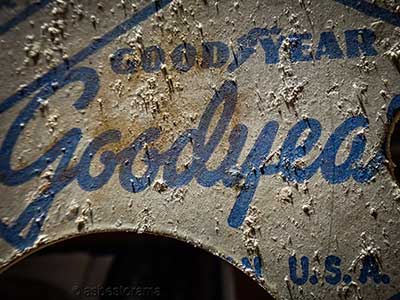Get Your Free Mesothelioma Guide

Find a Top Mesothelioma Doctor

Access Help Paying for Treatment

Major suppliers of asbestos-containing products include Johns-Manville, National Gypsum Company and Armstrong World Industries. Many companies involved in manufacturing and chemical refining also relied heavily on asbestos at their facilities.
Since the late 1800s, American firms, including Johns-Manville, grew rich by mining, manufacturing and selling asbestos products.
A century later, company documents revealed that Johns-Manville and many other companies knew asbestos was deadly. They went to great lengths to hide this from workers and consumers. The reasons for not disclosing it: The asbestos industry put profits above public health.
In the 1950s and 1960s, U.S. industries widely used asbestos materials. These included shipbuilding, construction, power generation and heavy manufacturing.
In the 1970s, a surge in personal injury claims led to the bankruptcy of many asbestos manufacturers. To manage the overwhelming legal claims, they set up trust funds to protect themselves from future lawsuits.
Over 50 countries, including those in the European Union, have banned or limited asbestos because of health concerns. Similarly, the U.S. implemented strict regulations in the 1970s.
Get Your Free Mesothelioma Guide

Find a Top Mesothelioma Doctor

Access Help Paying for Treatment

Asbestos mining has been around for thousands of years. But it took off during the Industrial Revolution of the 1800s. The mineral’s resistance to heat, chemicals, and electricity made it highly sought after for various industrial uses.
Manufacturers initially added asbestos insulation to steam engines, pipes and locomotives. Its use later spread to boilers, gaskets, cement, roofing and brake pads.
It started with me going down to the Oneida County Courthouse in Utica, New York, with my dad. I would go down there with him, and it was very dusty in the boiler room. There would be chunks of gray, fibrous stuff down there. I didn’t know what it was, but I’d pick it up and play with it.
By the early 20th century, some asbestos companies knew their main product was injuring people. But they chose not to improve safety or use an alternative mineral. Instead, they ignored information that could hurt their business and reputation.
Records reveal that Johns-Manville leaders were aware of asbestos risks as early as 1934. Around that time, the company conducted secret studies on asbestos exposure. However, they hid the harmful results. This led to an asbestos cover-up that lasted for decades.
Mesothelioma survivor Ron Green worked at a company owned by Johns-Manville in the 1960s. “It was not something I worried about, but it stayed in the back of my mind, so I wasn’t caught totally off guard with the diagnosis,” Green said. “It just took 48 years before the effects finally showed up.”
In addition to Johns-Manville, other top asbestos makers include:
Asbestos use jumped during World War II because of military contracts. The U.S. government mandated asbestos insulation in Navy and Coast Guard ships. Decades after the war, hundreds of asbestos companies grew and prospered by incorporating asbestos in thousands of industrial and household products.

At its height, asbestos was found in about 3,000 products. It was mainly used for insulation in construction, shipbuilding and manufacturing.
Asbestos was used in many materials, such as ceiling tiles, joint compounds, cement, drywall, and roofing. Today, these products can still release toxic fibers during renovations or demolitions.
Asbestos has been made into rope, cloth and clothing. Shipyard workers installing asbestos insulation often wore gloves and aprons with asbestos.
The automotive industry still uses asbestos in many parts. For example, gaskets and brake pads, which need to handle high temperatures and friction, may contain asbestos.
The World Health Organization reports that 125 million people globally have been exposed to asbestos at work. The most dangerous jobs are in mining and processing asbestos. These activities release large amounts of toxic fibers into the air.
Construction also carries high exposure risks. In the U.S., drywall and insulation workers were often exposed to asbestos. Likewise, carpenters and others at the same site faced similar risks.
During World War II, shipyard workers were exposed to a lot of asbestos. Asbestos insulation was standard on ships, and tight spaces made it risky to install. Pipefitters, boiler workers, and electricians working on Navy ships also faced similar dangers.
By the 1960s, scientists had enough proof of asbestos’s dangers. In 1964, Dr. Irving Selikoff’s study showed a clear link between asbestos and cancer.
The research found many insulation workers died from mesothelioma, lung cancer and asbestosis between 1943 to 1962. Insulation workers also died from stomach and colorectal cancers.
More medical evidence supported Selikoff’s findings. As a result, America’s asbestos industry declined.
The U.S. Environmental Protection Agency took a tough stance in 1970 with the Clean Air Act. It introduced the National Emission Standards for Hazardous Air Pollutants. These standards set strict limits on asbestos and other harmful air pollutants.
New rules impacted companies that milled, sprayed or disposed of asbestos. By the late 1970s, many began to eliminate asbestos from their products.
Despite global bans on asbestos, the mining and production continue. Russia, China, Kazakhstan and other countries still extract and sell this toxic mineral.
According to a 2011 inventory of more than 60,000 asbestos-laden products, approximately 600 companies and suppliers operated worldwide that year.
The U.S. Geological Survey asserts that U.S. asbestos use has fallen 99.9% since 1973. On March 2024, the Biden administration finalized a ban of chrysotile asbestos. The ban allows companies 12 years to phase out the use of the material during the manufacturing process. This new ban also doesn’t apply to all types of asbestos.
Chrysotile asbestos is still found in some textiles, cement and brake pads. In 2018, the U.S. chloralkali industry imported 750 tons for making chlorine.
The U.S. Environmental Protection Agency completed a risk assessment of current asbestos uses in the U.S. in 2019. The agency is currently working to propose and finalize actions to address risks.

Get help paying for treatment and other expenses by accessing trust funds, grants and other options.
Access Funds NowOver the last 50 years, a vast number of lawsuits about asbestos have emerged. These lawsuits have put companies connected to asbestos at risk. By 2002, around 730,000 individuals had filed claims related to asbestos. They targeted more than 8,400 companies. In 2020, there were 3,685 asbestos lawsuits, a drop of 11% from 2019, according to a 2021 KCIC review. Most cases involved mesothelioma (1,827), followed by asbestos-related lung cancer (1,484).
Some asbestos lawsuits lead to big payouts, especially for mesothelioma settlements. Courts order companies to pay when they are found liable. This covers medical bills, lost wages, loss of companionship and pain. A mesothelioma lawyer can help patients claim compensation, including from trust funds.
Courts often demand punitive damages from companies to discourage future wrongdoing
Asbestos has been used since ancient times. In 1858, Johns-Manville started making fire-resistant roofing with it. Other American companies also began mining, manufacturing and selling asbestos-containing products in the late 1800s.
Manufacturers are still developing products containing asbestos, such as gaskets and brake pads. Products containing less than 1% of asbestos are not required to display a warning label to consumers.
Countries around the world without an asbestos ban include:
Asbestos companies are being held liable for exposing workers and consumers to harmful substances that cause mesothelioma cancer. Those diagnosed with mesothelioma and having a history of asbestos exposure may claim compensation.
Companies that remove asbestos are called asbestos abatement companies. Their workers are trained and licensed on the safe removal of asbestos. They follow safety rules to protect themselves and others in the building.
Your web browser is no longer supported by Microsoft. Update your browser for more security, speed and compatibility.
If you are looking for mesothelioma support, please contact our Patient Advocates at (855) 404-4592
The Mesothelioma Center at Asbestos.com has provided patients and their loved ones the most updated and reliable information on mesothelioma and asbestos exposure since 2006.
Our team of Patient Advocates includes a medical doctor, a registered nurse, health services administrators, veterans, VA-accredited Claims Agents, an oncology patient navigator and hospice care expert. Their combined expertise means we help any mesothelioma patient or loved one through every step of their cancer journey.
More than 30 contributors, including mesothelioma doctors, survivors, health care professionals and other experts, have peer-reviewed our website and written unique research-driven articles to ensure you get the highest-quality medical and health information.
My family has only the highest compliment for the assistance and support that we received from The Mesothelioma Center. This is a staff of compassionate and knowledgeable individuals who respect what your family is experiencing and who go the extra mile to make an unfortunate diagnosis less stressful. Information and assistance were provided by The Mesothelioma Center at no cost to our family.LashawnMesothelioma patient’s daughter


King, D. (2025, January 14). Asbestos Manufacturers. Asbestos.com. Retrieved July 12, 2025, from https://www.asbestos.com/companies/
King, Daniel. "Asbestos Manufacturers." Asbestos.com, 14 Jan 2025, https://www.asbestos.com/companies/.
King, Daniel. "Asbestos Manufacturers." Asbestos.com. Last modified January 14, 2025. https://www.asbestos.com/companies/.
An occupational scientist or another expert who specializes in occupational hazards reviewed the content on this page to ensure it meets current scientific standards and accuracy.
Diana Zuckerman is the founder and president of the National Center for Health Research. She develops prevention strategies and treatments for programs such as the Cancer Prevention and Treatment Fund.
Our fact-checking process begins with a thorough review of all sources to ensure they are high quality. Then we cross-check the facts with original medical or scientific reports published by those sources, or we validate the facts with reputable news organizations, medical and scientific experts and other health experts. Each page includes all sources for full transparency.
Please read our editorial guidelines to learn more about our content creation and review process.
